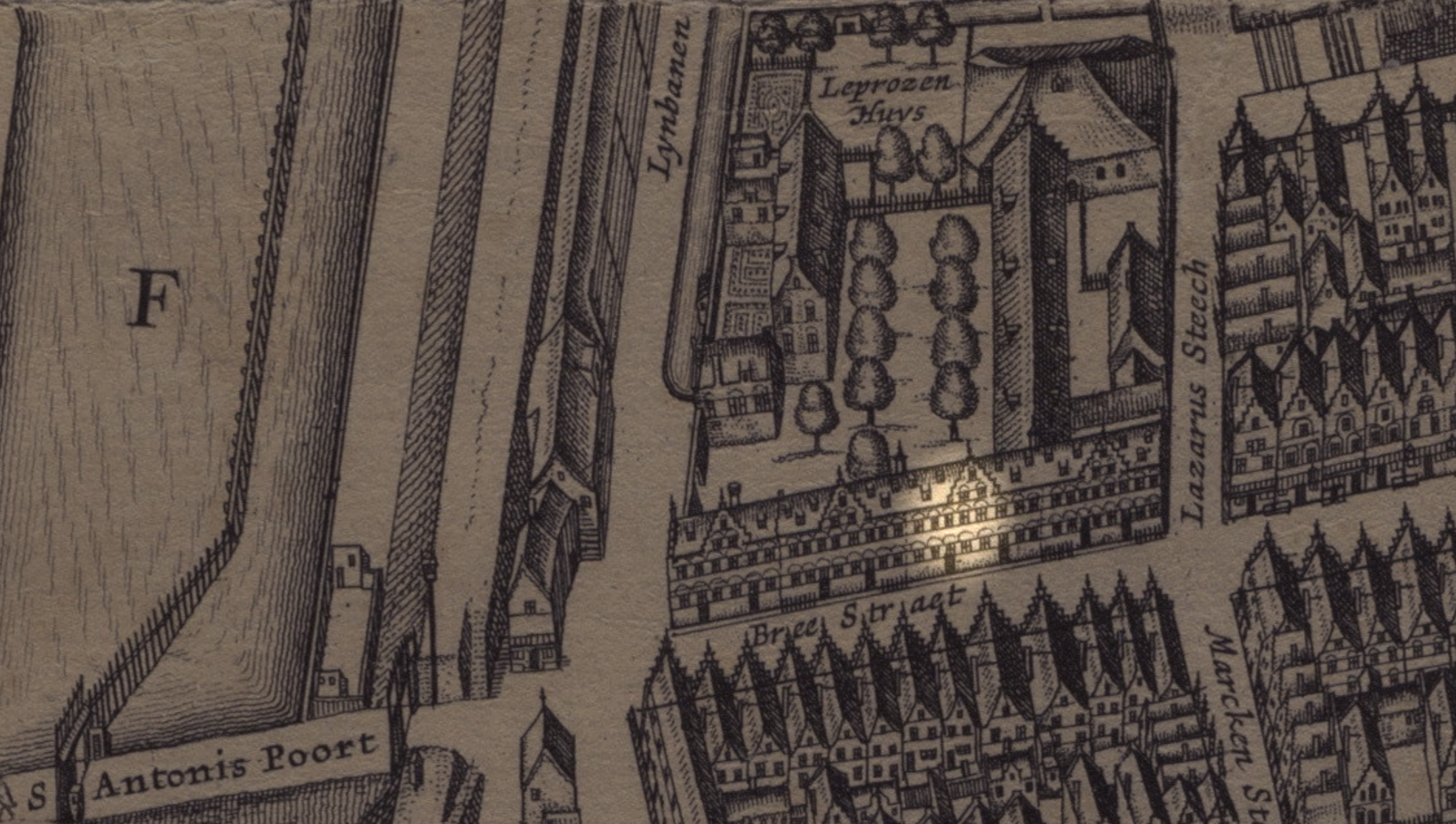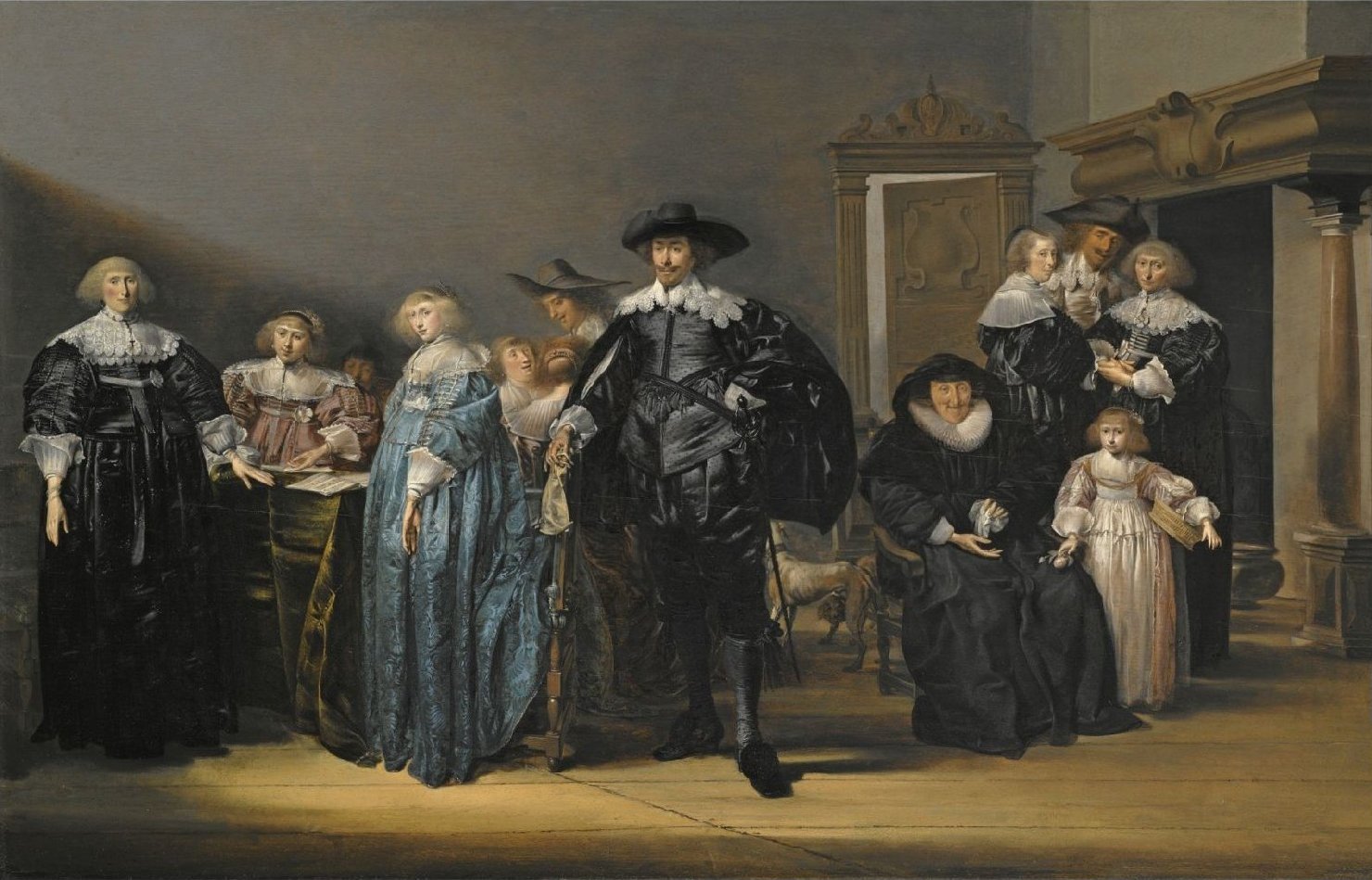
VIDEO: Waerom vlucht ghy Millibe
Inventaris 1636-Codde/Arents
Codde research
Codde-CH. M. Dozy
Cotermans-1646
HENDRIK MEURS information
JUDITH COTERMANS information
JAN MEURS information
JUDITH WEIJNTJES information
CORNELIA COTERMANS information
JOOST VAN DEN VONDEL information
PIETER CODDE’S HOUSE ANTHONIEBREESTRAAT information
Pieter Jacobsz Codde (1599-1678) produced several history works and a considerable number of portraits. In 1637, he finished the so-called Meagre Company, now in the Rijksmuseum, an Amsterdam militia piece begun by Frans Hals (1582/83-1666) in 1633. He was particularly prolific during the 1620s and the 1630s, rarely signed after 1645, but remained active as a painter in the 1650s.
Codde was active in both artistic and literary circles. In 1627, the poet and playwright Elias Herckmans (c. 1596-1644) dedicated his tragedy Tyrus to the artist, inspired by Codde’s now lost painting of the subject. In 1633 Codde’s own poem of pastoral love ‘Waerom vlucht ghy Millibe’ was published in the volume of poetry Hollands Nachtegaeltien.



VIDEO: Pieter Codde - “Comedianten dans” - Adriaen Valerius & drinklied More Palatino - J.P Sweelinck
VIDEO: PIETER CODDE & BARENTJE WILLEMS CHRIST-DAGH 1663
VIDEO: NICOLAES VALLET
VIDEO: Pieter Jacobsz Codde & the lute

Pieter Jacobsz Codde
Pieter Codde was the son of the paalknecht Jacob Codde (born 1567/1568 and buried on 25 November 1625). He, together with his sister Claer and his brother Jan Jacosz. bought silver at his father's sale (but not art). He was baptized on 11 December 1599 and was betrothed to Marijtje Arends van Hoorn (baptized in the O.K. on 31 March 1605) on 27 October 1623. She was the daughter of Substitute Haen. On 25 April 1624, Pieter Jacobsz., painter, and Maritje Arents had their daughter Clara baptized in the O.K. in the presence of Jacob Pietersz. (the painter's father) and Lubbert Dircks. A paalknecht was a minor municipal job that involved the collection of an excise fee collected from boats that docked at the Nieuwe Brug near the Dam.

At the latest in 1628 Codde rented a house in the Jodenbreestraat, in 1631 his capital was estimated only 1,000 guilders, a few years later, according to an inventory of 02/05/1636 he was the owner of an extensive collection of paintings.
On the eve of the Twelfth Night of Epiphany, on January 6, 1636, Pieter Codde and Marritgen Arents Schilt spent the evening with another couple - Jan Pietersz. Van Rijn and Cornelia Christien. The two man drank heavily and on the couple's return home, Pieter Codde attacked and raped their twenty-two year old servant girl, Aefge Jans, in the kitchen. When confronted with his behavior, Codde said that his wife is jealous. During his interrogation Codde said he was so drunk that he simply could not recall what had happened that night. The next day, three women (stadsvroedvrouwen) in the service of the city magistrates, came to examine Aefge Jans in the torture chamber (pijnkamer) but found no evidence of rape. This affair led to Pieter Codde's separation from his wife.
On April 25, 1646 Marritgen Aerents Schilt wrote her last will and mentioned the separation of Codde.
Codde wrote his final will at the age of seventy October 8, 1669.
Codde also willed a large some of his property to his maid-servant Barentje Willems, with the wish that she be well cared for. This expressed desire and the fact that Codde never remarried suggest that the couple had a much deeper relationship than that of a master and servant. On January 16, 1679 a document presenting Barentje Willems as the sole and the universal heiress of Pieter Codde, attests to the fact that she sold the house on Keizersgracht for 2500 guilders.
1680:




Early owners of the works by Pieter Codde: Anthony Gaillard
In the seventeenth century, a commission for an Amsterdam civic guard painting was seldom awarded to a painter from outside the city. Haarlem-based Frans Hals was an exception, but he soon fell out with the militiamen. The militia company ended their association with Frans Hals and asked Pieter Codde to finish the painting. By that time Hals had painted the seven figures on the left. Until not long ago it was thought that Codde painted the seven figures on the right by imitating his predecessor’s flowing brushstrokes. In the recent past, research into materials and techniques has proved that this idea was too simplistic: there are revisions by Codde on the left, and parts painted by Hals can be identified on the right.





 Foundation Musick's Monument
Foundation Musick's Monument




